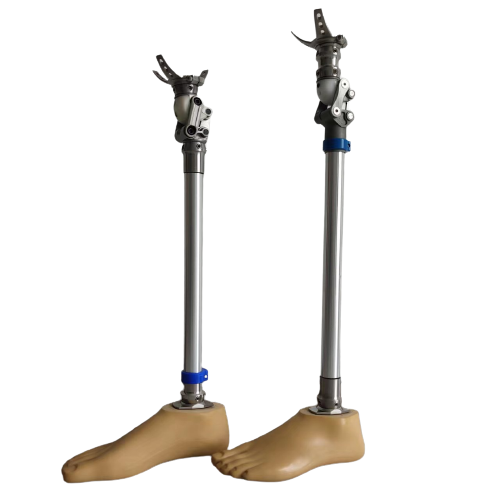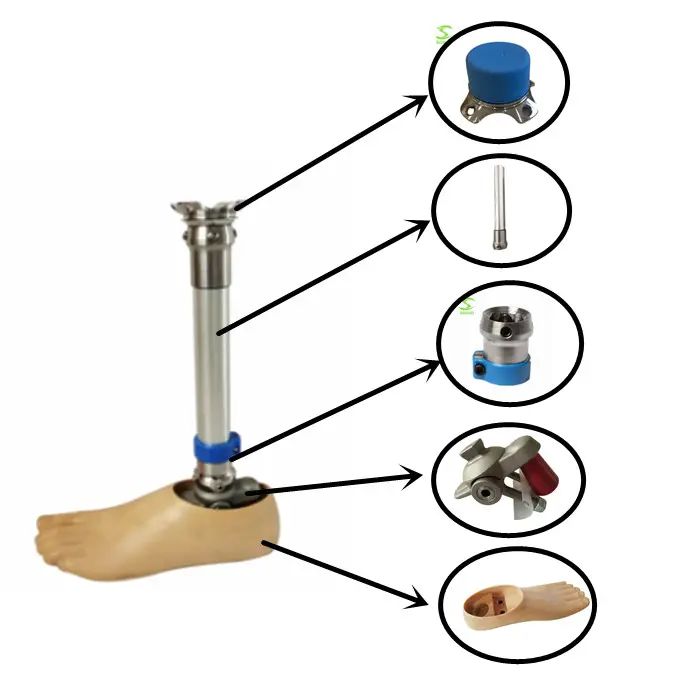How Prosthetic Orthosis Enhances Mobility for Amputees: A Comprehensive Guide
Release Time:
Aug 03,2025
How Prosthetic Orthosis Enhances Mobility for Amputees Table of Contents 1. Introduction to Prosthetic Orthosis 2. Types of Prosthetic Devices Available 3. Benefits of Using Prosthetic Orthosis 4. Technological Advancements in Prosthetics 5. Personalized Prosthetic Solutions for Enhanced Mobility 6. The Rehabilitation Process: Adapting to New Mobility 7. Overcoming
How Prosthetic Orthosis Enhances Mobility for Amputees
Table of Contents
- 1. Introduction to Prosthetic Orthosis
- 2. Types of Prosthetic Devices Available
- 3. Benefits of Using Prosthetic Orthosis
- 4. Technological Advancements in Prosthetics
- 5. Personalized Prosthetic Solutions for Enhanced Mobility
- 6. The Rehabilitation Process: Adapting to New Mobility
- 7. Overcoming Challenges with Prosthetic Orthosis
- 8. Real-Life Stories: Success with Prosthetic Orthosis
- 9. Frequently Asked Questions
- 10. Conclusion
1. Introduction to Prosthetic Orthosis
The world of **prosthetic orthosis** has undergone significant advancements over the years, providing new hope and opportunities for amputees. **Prosthetic orthosis** refers to devices designed to replace a missing limb or support an individual’s mobility when they have suffered from limb loss. These devices play a crucial role in restoring independence and improving the overall quality of life for amputees.
Prosthetic orthoses are not merely functional devices; they are intricately designed tools that allow individuals to perform daily activities, engage in physical fitness, and connect with their environment. Understanding how these devices enhance mobility is pivotal for anyone looking to explore options for recovery or rehabilitation.
2. Types of Prosthetic Devices Available
Prosthetic devices come in various forms tailored to meet the unique needs of each amputee. The primary types of prosthetic devices include:
2.1 Upper Limb Prosthetics
Upper limb prosthetics are designed for individuals who have lost a part or all of their arm. These devices range from simple cosmetic hands to advanced myoelectric prosthetics that allow for intricate movements, such as grasping and releasing objects.
2.2 Lower Limb Prosthetics
Lower limb prosthetics are crafted for those who have lost a leg or foot. They include a variety of designs, from standard prosthetic legs to specialized devices for athletes. Features may include adjustable knee joints, shock absorption systems, and energy-storing feet that assist with running or walking.
2.3 Specialty Prosthetics
Some amputees may require specialty prosthetics, such as those designed for specific activities like swimming or cycling. These devices are tailored for performance and comfort in varied conditions, ensuring that users can maintain an active lifestyle.
3. Benefits of Using Prosthetic Orthosis
Adopting a prosthetic orthosis offers numerous benefits, including:
3.1 Enhanced Mobility
One of the most significant advantages of prosthetic orthosis is the improvement in mobility. Amputees can regain their ability to walk, run, and engage in various physical activities, contributing to a more active lifestyle.
3.2 Psychological Well-being
The use of prosthetics can greatly influence an amputee's mental health. By restoring mobility, individuals often experience increased self-esteem and a sense of normalcy, which can lead to reduced anxiety and depression.
3.3 Improved Quality of Life
The functionality provided by prosthetic devices enhances the overall quality of life. Amputees can engage in social activities, pursue hobbies, and participate in family life with greater ease.
4. Technological Advancements in Prosthetics
Recent advancements in technology have revolutionized the field of prosthetics. Innovations such as 3D printing, smart sensors, and AI-driven components are paving the way for highly functional and customized prosthetic devices.
4.1 3D Printing
3D printing technology allows for the rapid production of prosthetic components tailored to the user’s specific measurements. This not only reduces costs but also improves the fit and comfort of the prosthetic orthosis.
4.2 Smart Sensors and AI Integration
With the incorporation of smart sensors, modern prosthetics can adapt to different terrains and activities. AI-driven functionality allows for intuitive control, making it easier for users to operate their devices seamlessly.
5. Personalized Prosthetic Solutions for Enhanced Mobility
The journey to finding the right prosthetic orthosis is highly personal. Prosthetists work closely with individuals to create customized solutions based on their unique needs, lifestyle, and preferences.
5.1 Assessment and Design
During the initial assessment, professionals evaluate the amputee’s physical condition, activity level, and goals. This information guides the design process, ensuring the final product meets the individual's requirements.
5.2 Fitting and Adjustment
Once the prosthetic device is created, fitting and adjustments are crucial. Proper alignment and comfort are essential for optimal performance, as ill-fitting prosthetics can lead to discomfort and reduced mobility.
6. The Rehabilitation Process: Adapting to New Mobility
The rehabilitation process is a critical phase for amputees adapting to their prosthetic orthosis. It typically involves several steps:
6.1 Physical Therapy
Physical therapy plays a significant role in helping amputees regain strength and learn to use their new device effectively. Therapists create tailored exercise programs to improve balance, coordination, and muscle strength.
6.2 Psychological Support
Adjusting to life with a prosthetic can be challenging emotionally. Psychological support and counseling can assist individuals in coping with their new reality and embracing the changes in their lives.
7. Overcoming Challenges with Prosthetic Orthosis
Despite the numerous benefits, amputees may encounter challenges when using prosthetic devices. Some common hurdles include:
7.1 Discomfort and Skin Issues
Discomfort caused by improper fit can lead to skin irritation. Regular follow-ups with a prosthetist are essential to ensure the device is comfortable and effective.
7.2 Emotional Adjustments
Amputees may struggle with feelings of loss and frustration. Support groups and counseling can provide valuable resources and community support to navigate these emotions.
8. Real-Life Stories: Success with Prosthetic Orthosis
Real-life experiences can inspire and provide insight into the transformative power of prosthetic orthosis. Many amputees have shared success stories that highlight the benefits of these devices.
8.1 Athletes Thriving with Prosthetics
Athletes like Amy Purdy, a Paralympic snowboarder and motivational speaker, showcase how prosthetic devices can enable individuals to achieve remarkable feats. Their stories exemplify resilience and determination in the face of adversity.
8.2 Everyday Heroes
Everyday individuals have also embraced prosthetic orthosis, finding ways to engage in daily activities that were once thought impossible. From returning to work to participating in family gatherings, these success stories emphasize the positive impact of prosthetics on everyday life.
9. Frequently Asked Questions
9.1 What is the average lifespan of a prosthetic device?
The average lifespan varies based on usage and care but typically ranges from 3 to 5 years before a replacement or adjustment may be needed.
9.2 How much does a prosthetic limb cost?
Costs can vary significantly depending on the type of prosthetic, materials used, and necessary technology, with averages ranging from $5,000 to over $100,000.
9.3 Can prosthetics be used for sports?
Yes, there are specialized prosthetics designed specifically for sports, allowing amputees to participate in various athletic activities.
9.4 How do I choose the right prosthetic device?
Choosing the right prosthetic involves consultations with professionals who assess your needs, preferences, and lifestyle to recommend the best options.
9.5 What kind of maintenance do prosthetic devices require?
Routine maintenance involves regular cleaning, checking for wear and tear, and periodic adjustments to ensure comfort and functionality.
10. Conclusion
Prosthetic orthosis plays a vital role in enhancing mobility for amputees, allowing individuals to reclaim their independence and engage with their surroundings fully. With continuous advancements in technology and personalized solutions, the future of prosthetics looks promising. By understanding the benefits, challenges, and available resources, amputees can navigate their journey toward recovery and embrace the freedom that comes with enhanced mobility.
Keywords:
You Can Also Learn More About Industry Trends






